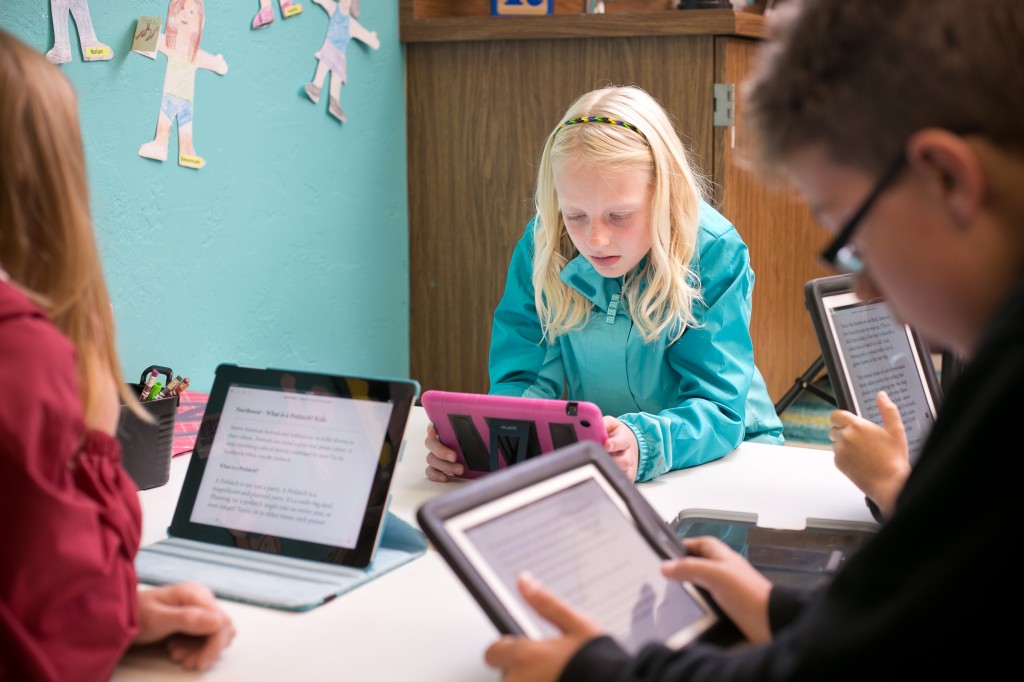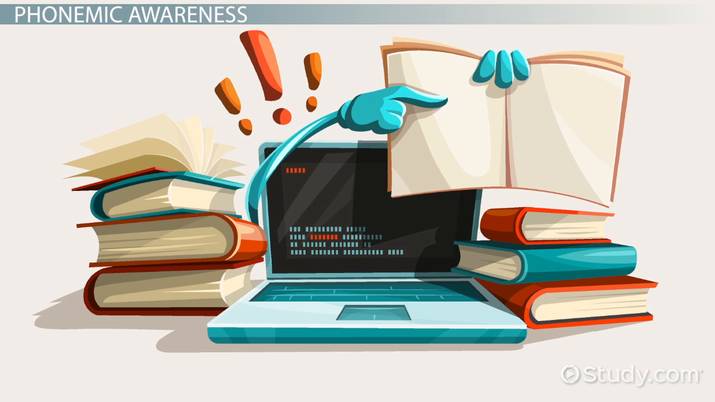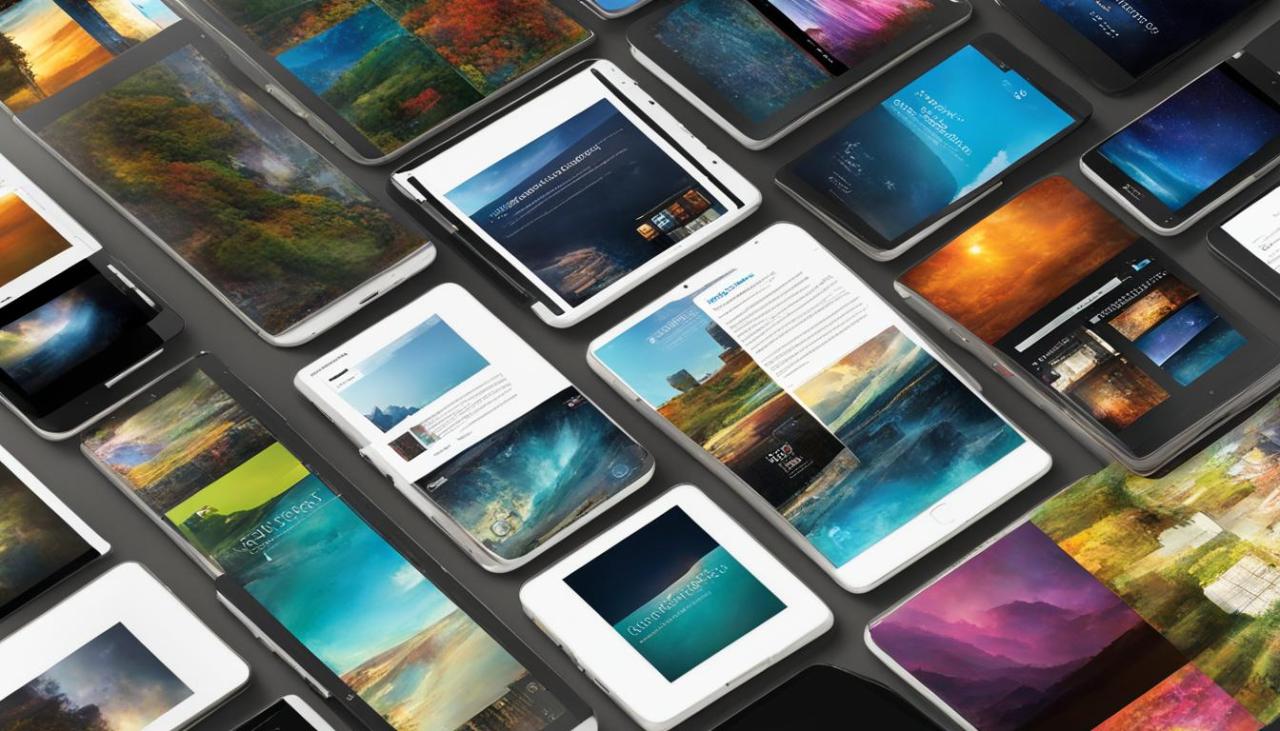Reading Technologies: A Journey Through Time
Reading technologies have been evolving alongside humanity, transforming the way we access and interact with information. From ancient scrolls and tablets to modern e-readers and immersive virtual reality experiences, the […]

Reading technologies have been evolving alongside humanity, transforming the way we access and interact with information. From ancient scrolls and tablets to modern e-readers and immersive virtual reality experiences, the journey of reading technologies has been marked by innovation and progress. This exploration delves into the history, evolution, and impact of reading technologies, examining their influence on literacy, accessibility, and the future of how we consume knowledge.
This comprehensive exploration encompasses the historical progression of reading technologies, highlighting key milestones and innovations that have shaped the evolution of reading. It delves into the advantages and disadvantages of various digital reading technologies, including e-readers, tablets, smartphones, and specialized software. Furthermore, it examines the role of reading technologies in improving accessibility for individuals with disabilities and their influence on modern education systems.
Evolution of Reading Technologies

The journey of reading technologies spans millennia, evolving from rudimentary forms to sophisticated digital platforms. This evolution has been marked by pivotal innovations that have transformed how we access and consume information. From the ancient scrolls and tablets to the modern e-readers and online libraries, the evolution of reading technologies has revolutionized our relationship with the written word.
Ancient Forms of Reading Technologies
Early forms of reading technologies predate the invention of the printing press and played a crucial role in the dissemination of knowledge. These technologies were often laborious and limited in their reach, but they laid the foundation for the development of more advanced reading technologies.
- Scrolls: These were long strips of papyrus or parchment rolled around a wooden cylinder. Scrolls were widely used in ancient Egypt, Greece, and Rome for recording texts, legal documents, and religious scriptures. They offered a portable and flexible format for storing and reading information.
- Tablets: These were flat pieces of clay, wax, or wood used for writing. Tablets were often inscribed with a stylus, and they served as a rudimentary form of note-taking and communication. Ancient civilizations like the Sumerians, Babylonians, and Egyptians employed tablets for recording information, including business transactions, legal documents, and literary works.
- Codex: This was an early form of book consisting of pages bound together. The codex was a significant advancement over scrolls, as it allowed for easier navigation and organization of texts. The codex became the dominant form of book in the Roman Empire and later in the Middle Ages.
The Printing Press and the Rise of Mass Literacy
The invention of the printing press in the 15th century by Johannes Gutenberg revolutionized the production and dissemination of printed materials. This groundbreaking innovation enabled the mass production of books, making knowledge more accessible to a wider audience.
- Gutenberg’s Printing Press: This movable-type printing press allowed for the rapid production of printed materials, leading to a surge in the availability of books and other printed materials. The invention of the printing press had a profound impact on society, contributing to the spread of literacy, the Renaissance, and the Reformation.
- The Rise of Mass Literacy: The printing press facilitated the spread of literacy, as books became more affordable and accessible to the general public. This led to a greater demand for education and a wider dissemination of knowledge.
Modern Reading Technologies
The 20th and 21st centuries have witnessed a rapid evolution of reading technologies, driven by technological advancements and changing consumer demands. These technologies have transformed how we read, offering greater accessibility, portability, and interactivity.
- E-readers: These devices, such as Amazon’s Kindle and Barnes & Noble’s Nook, allow users to read digital books and magazines. E-readers offer several advantages over traditional books, including portability, adjustable font sizes, and the ability to download and store a vast library of books.
- Online Libraries and Digital Platforms: The internet has revolutionized access to information, providing access to vast online libraries and digital platforms such as Google Books, Project Gutenberg, and Scribd. These platforms offer a wide range of books, articles, and other digital content, making knowledge readily available to anyone with an internet connection.
- Interactive Reading Technologies: Modern reading technologies are increasingly interactive, offering features such as annotations, highlighting, and dictionary lookups. These features enhance the reading experience by providing tools for engagement and comprehension.
Impact of Reading Technologies on Reading Comprehension and User Experience
The evolution of reading technologies has had a significant impact on reading comprehension and user experience.
- Reading Comprehension: Some studies suggest that reading on digital devices may lead to shallower processing of information, potentially affecting reading comprehension. This is attributed to factors such as the distractions associated with digital devices and the fragmented nature of digital reading. However, other studies have shown that digital reading can enhance comprehension by providing interactive features such as highlighting, annotations, and dictionary lookups.
- User Experience: Digital reading technologies have transformed the user experience, offering greater convenience, portability, and accessibility. E-readers and online libraries allow users to access a vast library of books and other digital content from anywhere with an internet connection. Additionally, digital reading platforms offer features such as adjustable font sizes, night mode, and dictionary lookups, enhancing the reading experience.
Digital Reading Technologies

Digital reading technologies have revolutionized the way we consume content, offering a plethora of options for accessing and interacting with written material. From dedicated e-readers to smartphones and specialized software, these technologies have transformed the reading experience, making it more accessible, interactive, and personalized.
E-Readers
E-readers are specifically designed for reading digital content, offering a dedicated and optimized experience. They typically feature an e-ink display, which simulates the appearance of real paper, reducing eye strain and improving readability.
E-readers offer several advantages:
- Eye Strain Reduction: E-ink displays mimic the appearance of printed paper, reducing eye fatigue compared to backlit screens.
- Longer Battery Life: E-readers consume minimal power, enabling weeks of usage on a single charge.
- Lightweight and Portable: E-readers are designed for portability, making them ideal for reading on the go.
- Large Storage Capacity: E-readers can store thousands of books, allowing users to carry an extensive library.
However, e-readers also have some limitations:
- Limited Functionality: E-readers are primarily designed for reading, lacking the multimedia capabilities of other devices.
- Limited Web Browsing: E-readers typically have limited web browsing functionality, making them less versatile for accessing online content.
- Limited App Support: E-readers generally have a limited selection of apps, compared to tablets or smartphones.
Tablets
Tablets, with their larger screens and versatile capabilities, offer a broader range of reading experiences. They can be used for reading e-books, magazines, newspapers, and even web pages.
Tablets provide several advantages:
- Versatile Functionality: Tablets offer a wide range of features, including web browsing, multimedia playback, and app access, making them suitable for various tasks beyond reading.
- High-Resolution Displays: Tablets typically have high-resolution displays, offering a clear and detailed reading experience.
- Touchscreen Interface: Touchscreen interfaces provide intuitive navigation and interaction with digital content.
- Large App Ecosystem: Tablets have access to a vast library of apps, including reading apps with advanced features like note-taking, dictionary integration, and personalized settings.
However, tablets also have some disadvantages:
- Eye Strain: Backlit displays on tablets can cause eye strain, especially during prolonged reading sessions.
- Shorter Battery Life: Tablets typically have shorter battery life compared to e-readers, requiring frequent charging.
- Heavier and Bulkier: Tablets are generally heavier and bulkier than e-readers, making them less portable.
Smartphones
Smartphones, ubiquitous in today’s world, have become a convenient platform for reading. They offer a portable and accessible way to consume digital content, leveraging their built-in features and apps.
Smartphones offer several advantages:
- Portability and Accessibility: Smartphones are always at hand, providing easy access to digital reading materials.
- Versatile Functionality: Smartphones offer a wide range of features, including web browsing, multimedia playback, and app access, making them suitable for various tasks beyond reading.
- Large App Ecosystem: Smartphones have access to a vast library of apps, including reading apps with advanced features like note-taking, dictionary integration, and personalized settings.
However, smartphones also have some disadvantages:
- Smaller Screen Size: Smartphones have smaller screens compared to tablets or e-readers, which can make reading less comfortable for extended periods.
- Eye Strain: Backlit displays on smartphones can cause eye strain, especially during prolonged reading sessions.
- Limited Storage Capacity: Smartphones typically have limited storage capacity, requiring users to manage their reading materials carefully.
Specialized Software
Specialized reading software offers advanced features and customization options for enhancing the reading experience. These programs provide tools for managing libraries, adjusting text settings, and improving accessibility.
Specialized reading software offers several advantages:
- Advanced Features: Specialized software provides features like text-to-speech, dictionary integration, and personalized reading settings, enhancing the reading experience.
- Accessibility Features: Reading software can offer accessibility features like font size adjustments, color contrast settings, and text-to-speech options, making reading more accessible for users with disabilities.
- Cross-Platform Compatibility: Many reading software programs are available on multiple platforms, ensuring consistency across devices.
However, specialized software also has some disadvantages:
- Learning Curve: Some specialized software programs have a steeper learning curve, requiring users to invest time in understanding their features.
- Subscription Costs: Some specialized reading software programs require subscriptions, adding to the overall cost of using the technology.
Comparison of Digital Reading Technologies
| Feature | E-Reader | Tablet | Smartphone | Specialized Software |
|---|---|---|---|---|
| Display | E-ink (paper-like) | Backlit LCD or OLED | Backlit LCD or OLED | N/A |
| Eye Strain | Low | Moderate | Moderate | N/A |
| Battery Life | Long (weeks) | Moderate (few hours to a day) | Moderate (few hours to a day) | N/A |
| Portability | High | Moderate | High | N/A |
| Functionality | Limited (reading only) | Versatile (web browsing, multimedia, apps) | Versatile (web browsing, multimedia, apps) | Advanced reading features |
| App Ecosystem | Limited | Large | Large | N/A |
| Accessibility Features | Basic | Moderate | Moderate | Advanced |
| Cost | Moderate | Moderate to High | Low to Moderate | Low to High |
Reading Technologies and Accessibility

Reading technologies have played a pivotal role in enhancing accessibility for individuals with disabilities, fostering inclusivity and empowering them to engage with the written word. These technologies have bridged the gap between traditional reading methods and the needs of diverse learners, creating a more equitable and accessible learning environment.
Assistive Technologies for Visual Impairments
Assistive technologies have significantly improved reading experiences for individuals with visual impairments. These tools provide alternative ways to access and consume written information, enabling them to participate fully in education, employment, and everyday life.
- Screen Readers: Screen readers are software programs that read aloud the text displayed on a computer screen. They convert digital text into synthesized speech, allowing users to navigate and interact with digital content without relying on visual cues. For example, a student with low vision can use a screen reader to access online textbooks, navigate websites, and complete assignments.
- Text-to-Speech Software: Text-to-speech software functions similarly to screen readers, converting text into audible speech. However, it is typically used for reading standalone documents or web pages. Users can select the desired reading speed, voice, and other settings to personalize their experience. This technology is particularly beneficial for individuals with dyslexia or other learning disabilities who struggle with traditional reading methods.
- Braille Displays: Braille displays are electronic devices that present text in braille, a tactile reading system used by blind and visually impaired individuals. These displays have refreshable braille cells that dynamically change to represent the current text being read. Users can navigate the text by moving their fingers across the braille cells, providing a tactile and independent reading experience.
Reading Technologies and Education
Reading technologies have significantly impacted modern education systems, transforming how students learn and teachers instruct. The rise of digital tools and resources has opened up new avenues for personalized learning, fostering a more engaging and effective learning experience.
Personalized Learning
Personalized learning is a key aspect of modern education, aiming to cater to individual student needs and learning styles. Reading technologies play a crucial role in achieving this goal. Adaptive learning platforms use artificial intelligence (AI) to analyze student performance and tailor content and pace to their individual needs. For example, platforms like Khan Academy and Duolingo adapt the difficulty level of exercises based on student progress, ensuring that students are challenged appropriately. Interactive textbooks and digital learning resources offer interactive elements, such as quizzes, videos, and simulations, that allow students to learn at their own pace and engage with content in a way that suits their learning style.
Digital Literacy
Digital literacy is an essential skill in today’s technology-driven world. Reading technologies are instrumental in developing digital literacy among students. They provide opportunities for students to interact with digital content, explore different formats, and learn to navigate the digital landscape. Students learn to critically evaluate information, identify credible sources, and understand the ethical implications of using digital tools. This includes developing skills in using search engines effectively, understanding digital privacy and security, and recognizing the potential for misinformation and bias in online content.
Educational Applications of Reading Technologies
The use of reading technologies in education is diverse and multifaceted. Here’s a table outlining some of the key applications:
| Application | Description | Benefits |
|—|—|—|
| Interactive Textbooks | Digital versions of traditional textbooks with interactive elements like quizzes, videos, and simulations. | Enhance engagement, provide personalized learning paths, and offer immediate feedback. |
| Educational Games | Gamified learning experiences designed to teach specific concepts or skills. | Make learning fun and engaging, motivate students, and promote collaboration. |
| Virtual Learning Environments (VLEs) | Online platforms that facilitate online learning, offering access to resources, communication tools, and assessment tools. | Provide flexibility and accessibility, support blended learning models, and foster collaboration among students. |
| Assistive Technologies | Tools designed to support students with disabilities, such as screen readers, text-to-speech software, and speech-to-text software. | Enable students with disabilities to access and engage with educational content, promoting inclusion and equity. |
Engagement and Learning Outcomes
Reading technologies have a proven impact on student engagement and learning outcomes. Interactive elements, such as simulations, games, and multimedia content, make learning more engaging and memorable. The ability to access information and resources anytime and anywhere increases student motivation and autonomy. Digital tools can provide immediate feedback, allowing students to identify areas for improvement and track their progress. This personalized approach fosters a sense of ownership and responsibility for learning, leading to better academic performance.
“Technology is not a magic bullet, but it can be a powerful tool to improve education if used effectively.” – Dr. Salman Khan, Founder of Khan Academy.
Conclusion
As we look towards the future, reading technologies are poised to play an even more transformative role in our lives. Advancements in artificial intelligence, virtual reality, and augmented reality are creating immersive and personalized reading experiences that promise to revolutionize how we learn, explore, and connect with information. The evolution of reading technologies is a testament to human ingenuity and our enduring quest for knowledge, shaping a future where the boundaries of reading continue to expand.
Reading technologies have evolved dramatically, from the printed page to digital screens. This evolution has brought about new challenges, particularly in the realm of data management. Implementing robust data governance, people, process, and technology strategies is crucial for ensuring responsible data handling and ethical use of reading technologies.
By prioritizing these principles, we can harness the power of reading technologies while safeguarding user privacy and data integrity.








